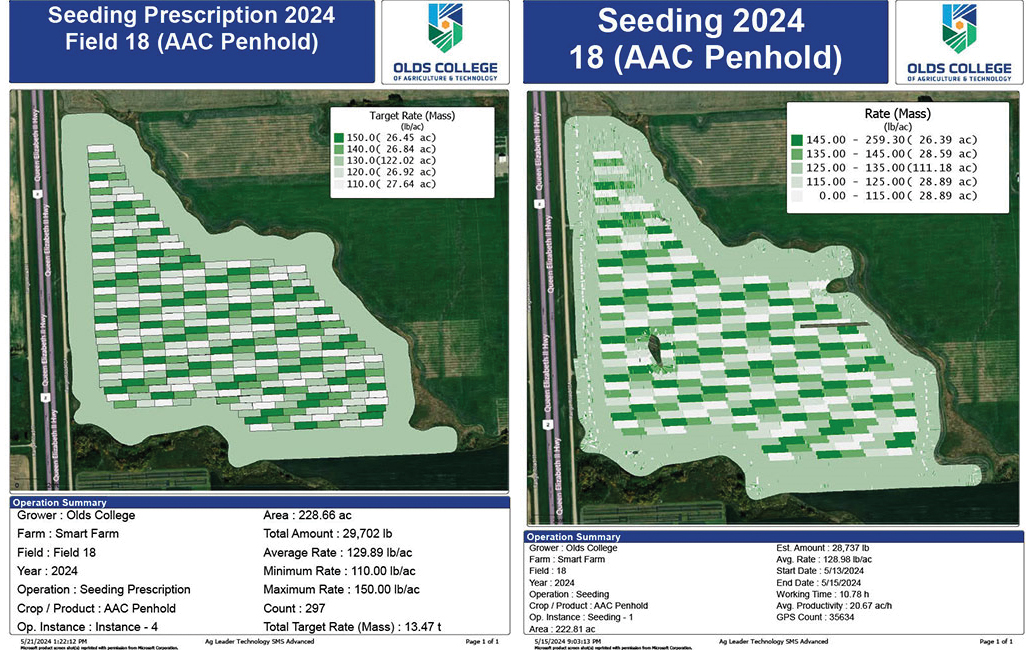FIELDS AND FIGURES
BY BRADEN MALSBURY • PHOTO COURTESY OF OLDS COLLEGE
The Olds College Centre for Innovation (OCCI) and Alberta Grains are collaborating with several central Alberta farmers to assess the viability of a new research method. Alberta Grains will contribute $40,000 of in-kind support and provide advice on its applicability and value to farmers.
The project will examine the use of the on-farm precision experimentation (OFPE) methodology created by the University of Illinois’ Data-Intensive Farm Management (DIFM) Project. The web-based platform employs machine learning to plan, design and analyze field-scale checkerboard plot trials. This provides insight into crop yield and field profitability responses. The platform will be used in this project to study various wheat seeding and nitrogen rates over two growing seasons. “You collect piles and piles of data on a field, more than you would with a plot trial or a strip trial,” said Herman Simons.
One of three researchers at work on the project, Simons is the smart agriculture applied research manager for Olds College. “By having multiple levels of treatments, you now get an expression of the variability of the field. You get more valuable data specific to your field and farm practices to help make better decisions for the future to assist with improving the bottom line.”
This past season, the project was implemented on four farms in the Olds area with the intention to expand to 10 next season. The fields being studied are at least 60 acres in size. Though the project is conducted in a limited geographic area, the research team hopes information generated will be applicable to farms across Canada.
In Western Canada, the adoption of variable rate technology and on-farm experimentation remains low. The study will assess the DIFM methodology to determine its effectiveness as a tool to conduct additional OFPE trials.
“Based on the outcomes of the data collected, the farmer is being presented with a report on where the optimum result is for their field as it relates to seeding density and as it relates to nitrogen application,” said Simons. He suggested the study may answer questions related to variable rate application for seeding or nitrogen based on the previous year’s field report.
The University of Illinois has provided programming and statistical support to adjust the DIFM framework for the variation in crops between American states, with their high corn, cotton and soybean acreage, and Alberta.
The project’s first-year results support the hypothesis that the University’s platform can help farmers improve their management practices.
While the main goal is to confirm the viability of the framework for research use on Alberta farms, it will also assess its ability to collate data across multiple farms to generate a regional recommendation.
If it works for seeding and nitrogen rates, it will be applicable to additional practices such as the timing of seeding and spraying and trialing new products and varieties. The process should simplify and minimize the time demands of on-farm research.
As well, the farmers who generously participated in the inaugural round of research have committed to a second year with several more agreeing to join the expanded year of field trials.
Olds area farmers interested in taking part in this project can contact Herman Simons (hsimons@oldscollege.ca) or Blair Bateman (bbateman@oldscollege.ca) for more details.
Braden Malsbury is the OCCI communications advisor, applied research.







Comments